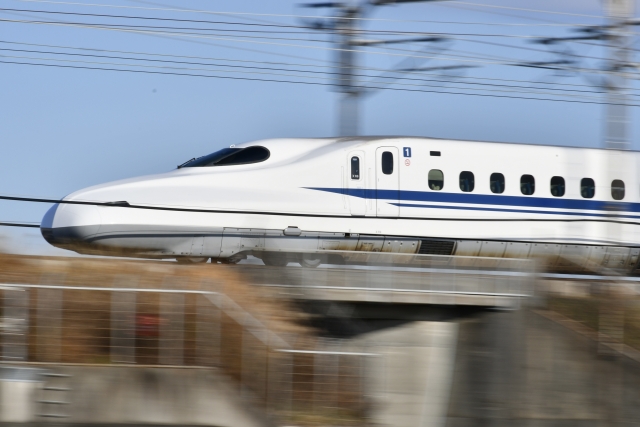
The Shinkansen, also known as the bullet train, is a world-famous high-speed train system in Japan. It revolutionized transportation in Japan and has become a symbol of the country’s modernity and efficiency. The first Shinkansen line, called the Tokaido Shinkansen, opened in 1964, connecting Tokyo and Osaka, and it has since expanded to cover much of Japan.
The Shinkansen is a marvel of engineering, capable of reaching speeds of up to 320 km/h (200 mph). Its sleek, aerodynamic design reduces air resistance and noise, and its advanced safety features and punctuality have made it one of the safest and most reliable transportation systems in the world.
One of the main advantages of the Shinkansen is its efficiency. Trains run on time almost to the second, and they arrive and depart from stations with military precision. This means that travelers can plan their journeys with confidence, knowing that they will arrive at their destination on time.
Another advantage is the comfort of the trains themselves. Shinkansen trains are spacious and well-appointed, with comfortable seats, plenty of legroom, and large windows offering panoramic views of the passing scenery. Some trains even have restaurants, souvenir shops, and other amenities.
The Shinkansen also offers a convenient way to explore Japan. Its extensive network of lines connects major cities across the country, making it easy to travel from one place to another quickly and efficiently. For example, it takes just over two hours to travel from Tokyo to Kyoto on the Shinkansen, compared to around eight hours by car or regular train.
There are several types of Shinkansen trains, each offering different levels of comfort and speed. The fastest and most luxurious is the Nozomi, which runs on the Tokaido and Sanyo lines, connecting Tokyo to Osaka and beyond. The Hikari is the next fastest, followed by the Kodama, which stops at every station along the line. Some Shinkansen trains are reserved for certain categories of passengers, such as Green Cars for those who want a more luxurious experience or the Gran Class for those who want the ultimate in comfort and service.
The Shinkansen is also an eco-friendly mode of transportation. Its electric-powered trains produce zero emissions, and the use of the system reduces the number of cars on the road, thereby reducing traffic congestion and pollution. Additionally, the Shinkansen has helped revitalize rural areas of Japan by making them more accessible to travelers.
Traveling on the Shinkansen is a unique experience that is not to be missed when visiting Japan. The combination of speed, comfort, and efficiency makes it an unparalleled mode of transportation. Plus, the views of Japan’s beautiful landscapes from the train are simply stunning.
When traveling on the Shinkansen, there are a few things to keep in mind. Firstly, it’s important to purchase tickets in advance, especially during peak travel times, as trains can fill up quickly. Tickets can be purchased online, at ticket machines in train stations, or at ticket counters. Secondly, it’s important to arrive at the station on time, as trains leave punctually and there is little room for delay. Finally, it’s important to respect the rules of the train, such as not eating or drinking in non-designated areas and keeping noise levels to a minimum.
In summary, the Shinkansen is a must-try experience for anyone visiting Japan. It is a testament to Japan’s innovation, efficiency, and commitment to sustainability. Whether traveling for business or pleasure, the Shinkansen is a convenient, comfortable, and unforgettable way to explore Japan’s cities and countryside.
